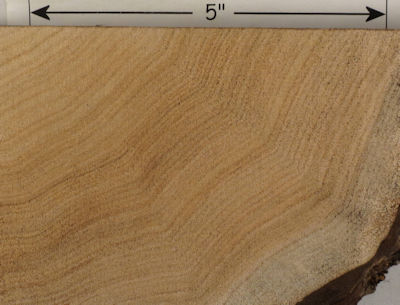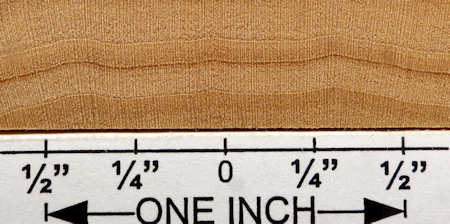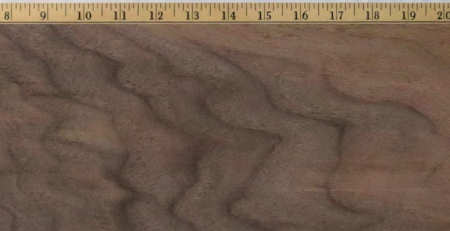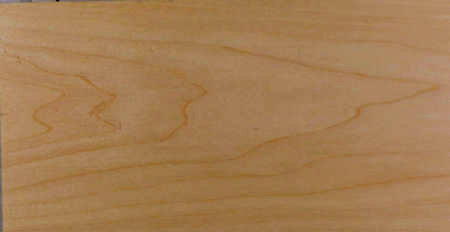open main page for all woods open page 2 for articles
FLUTED GRAIN
On a very few woods, most notably butternut buut sometimes also basswood and hornbeam, the growth rings sometimes regularly "dent" outwards from the center, as shown on the end grain shots directly below. This is known as fluted grain and it causes a distinctive figure in face grain pieces, as also shown below. It is sometimes a way to help distinguish butternut from walnut since although walnut CAN have it as well, it is much less often seen in walnut than in butternut.
Because of its geometry, fluted grain only shows up on end grain and flat cut face grain. It has no noticable effect on rift cut or quartersawn surfaces.
I have little experience with fluted grain because although I've had numerous pieces of walnut and a few pieces of butternut it is, as I said, quite rare in walnut and not all that regular in butternut and basswood. My inexperience is further complicated by the fact that there is no information about it on the internet (that I can find in mid-2014) and the only formal source where I have encountered any description of it is in Hoadley's "Identifying Wood". SO ... I can't say for for sure but I THINK it not only is relatively rare, it does not exist in large areas of even those trees that have it here and there and it does not necessarily go all the way around the tree.
Examples:

butternut end grain


basswood end grain shots showing fluted grain. On the first piece, the fluting was only weakly visible so I SEVERLY modified the darkness/color to force visibilty.


butternut and walnut flat cut surfaces showing the effects of fluted grain. The butternut piece in particular is an absolutely perfect example of this.


butternut veneer pieces showing fluted grain effects on flat cut surfaces
 NOT a true wood color
NOT a true wood color
this piece of basswood clearly shows the flat cut figure generated by fluted grain. The actual wood was so pale that the grain was hardly visible at all so I SEVERLY modified the darkness/color to force visibility.







 NOT a true wood color
NOT a true wood color